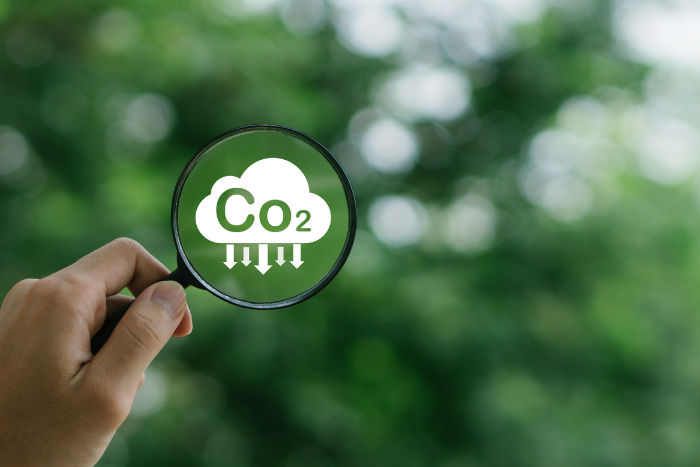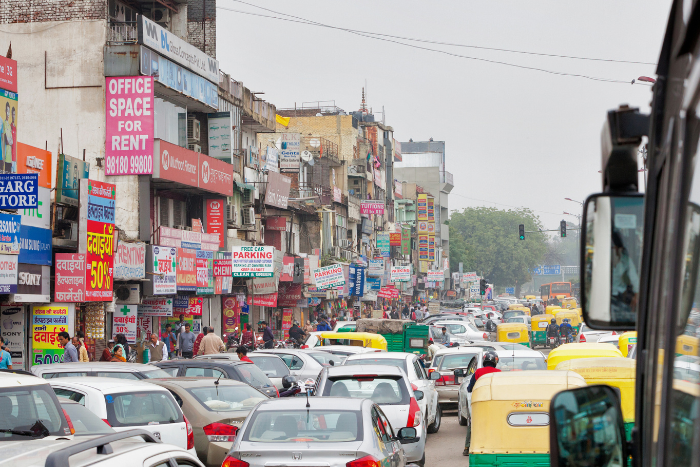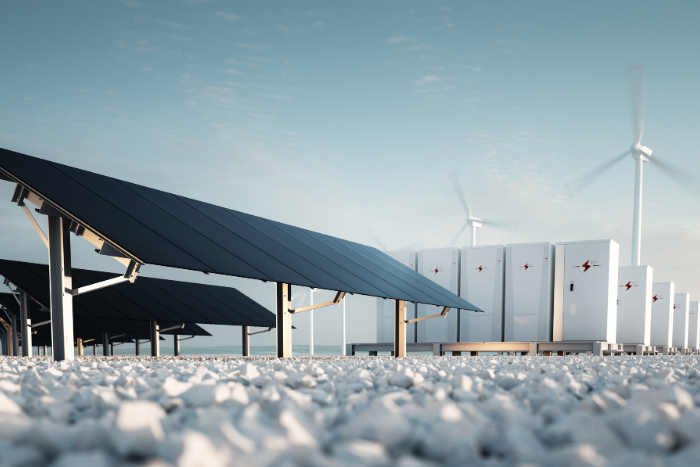


The SEC’s chargesheet on Adani and Azure indicate that renewable energy regulation is in trouble. To rebuild investors’ trust in the sector, here is what India needs to do.
Read more
India's solar energy market is poorly designed and dominated by a handful of powerful firms.
How to reboot India’s renewable energy sector
The SEC’s chargesheet on Adani and Azure indicate that renewable energy regulation is in trouble. To rebuild investors’ trust in the sector, here is what India can do
What is holding back the growth of solar power in India? Until November 20, 2024, answers to this question were relatively technocratic. Land acquisition was a key challenge, along with insufficient transmission lines, cash-strapped discoms, inadequate finance, weak support for rooftop solar, and rising solar tariffs as domestically manufactured modules became costlier. However, on November 20, those explanations shifted.
That day, the US’ Securities and Exchange Commission (SEC) claimed that Adani Green and Azure Power had bribed Indian officials for a project being set up with funds raised in America. While Adani Green has denied the charges, Azure Power has said it is cooperating with US agencies. The chargesheet also drew attention to broader concerns about renewable energy regulation in India.
According to the SEC, the Solar Energy Corporation of India (SECI) and the Union Ministry of Power (MoP) provided preferential treatment to the SECI tender, which clubbed manufacturing and generation. Notably, Andhra Pradesh, under the YSR Congress Party’s Jagan Mohan Reddy, signed a power purchase agreement (PPA) for 7 GW, even though the state had no immediate need for additional renewable power. Its state electricity regulator did not object to the purchase. These actions and revelations indicate that India’s solar energy market is not just poorly designed, as CarbonCopy has previously reported, but is increasingly dominated by a handful of powerful firms.
The costs of market distortion
India needs as much as ₹30 lakh crore to hit its renewable energy target of 500 GW by 2030.
However, the current investment level falls far short of that figure. As COP29 showed us, global climate finance is limited. The only entity with deep pockets in this arena are global and local investors — something policymakers recognise. As BJP leader Jayant Sinha, chair of the Parliamentary Panel of Finance in 2023, told Reuters at the time: “We almost have to double private sector capex in India to be on a net zero trajectory.”
These investors need healthy returns and a predictable regulatory regime. But when firms win Power Purchase Agreements (PPAs) despite being uncompetitive, others hesitate to enter the market. As Chandra, who tracks India’s energy sector, wrote in Scroll, “What hope can foreign companies and smaller companies, without access to the highest levels of politics and bureaucracy, have in navigating such processes?”
The anatomy of a breakdown
In the weeks after the chargesheet, SECI, MoP, YSRCP and APERC came under scrutiny. A deeper look reveals three even more fundamental issues plaguing India’s solar sector.
1) Solar tenders are disconnected from demand
In India’s electricity architecture, the Central Electricity Authority (CEA) studies power demand and projects supply scenarios. However, SECI, which floats solar tenders and sells them to discoms, does not base its actions on demand forecasts.
For instance, Andhra Pradesh’s 9 GW purchase raised serious questions. In 2021, TDP MLA Payyavula Keshav, now the state’s finance minister, asked SECI whether it had conducted “any load flow study or any demand study to check if the state needs the proposed 9 GW power?”. The lack of due diligence is not an isolated issue—over half of SECI’s tenders have found no takers, suggesting aggressive tendering—perhaps in a bid to chase the 500 GW by 2030 target—which is disconnected from actual demand.
2) Market concentration and capital control
India’s power sector is dominated by a few large firms. Time and again, these players are seen to influence policy—whether through alleged dilution of pollution norms or tenders structured to favor specific players. Maharashtra’s solar-cum-coal tender last year exemplifies this trend.
This concentration of capital is even more pronounced in India’s renewable energy sector. “The new energy system is worse than older systems like coal and oil,” said a now-retired IAS officer who has worked in the power sector. “It has fewer players – and almost all of them, despite power being a strategic sector, are private firms.”
Large firms derive efficiencies (and competitiveness) by building GW-scale solar parks. One fallout here is the acquiring of government lands for these parks. Another consequence is rising consolidation. As smaller players struggle to match the scale of large firms, capital gets further concentrated. Also, outdated subsidies from discoms, which had begun when solar power was fledgeling, have not been discontinued and are further distorting the market.
3) Political influence in power procurement
For decades, India’s political leadership has played a role in the country’s energy sector. Coal has long been a major source of influence. Over the past two decades, politically connected firms have secured hydropower MoUs. Now, solar is witnessing similar patterns.
YSRCP is not the first party to face charges of buying expensive power — or more power than the state’s renewable power obligation. After coming to power in 2019, Jagan Mohan Reddy, too, had said Chandrababu Naidu’s government had bought expensive power and, alleging corruption in these purchases, had cancelled PPAs. This recurring issue underscores the need for greater transparency and accountability in power procurement.
Some months ago, CarbonCopy met a former additional secretary in India’s Ministry of Power. “It’s a myth that India’s discoms are cash-strapped due to theft of power,” he told CarbonCopy. “That problem has been more or less fixed. India’s discoms are in trouble nowadays because of injudicious expenditure.”
Apart from these, there are older faultlines. Discoms, for instance, have been saddled with a pricing model where the biggest customers pay the highest bills. Consequently, large users switch to private generators, leaving discoms in a lurch. The country also needs to question whether manufacturing should be bundled with generation.
As all these processes seem to run unchecked, a larger drift in India’s solar sector is going unaddressed. India is one of the few nations that is bucking a global trend of solar power becoming the cheapest electricity in history. Effective solar tariffs (once overt and covert subsidies from discoms, etc, are added) are rising.
One reason is import substitution and protectionism. Another is transactions like the SEC case where states are being accused of wilfully buying expensive power.
A to-do list for repair
After speaking to power sector experts, CarbonCopy compiled a list of five policy changes that can restore India’s solar and power sector.
Those in the know said the country needs to move towards smaller and local generation. “In Europe, the biggest solar array will not be larger than 25 MW,” said the now-retired IAS officer. “They have set these up on landfills, etc, and created microgrids.” Experts believe this will rid the country of its land acquisition problems, leave farmland for the farmers, and move control from large private firms to local bodies and citizens who can set up their own micro-grids.
India also needs to look into redesigning its solar power tenders, said Rohit Chandra, assistant professor of public policy at IIT-Delhi. “SECI can do small experimental tenders to grow the market but, in the longer term, I think, developers will start contracting directly with state governments,” he added.

At this time, said Chandra, central and state government projections are unrealistic. States should come up with power demand projections that give a clear signal to the market,” he said. “What everyone wants are regular, predictable tenders backed by good projections.
They should say: ‘We will be coming out with seven tenders over the next three years, each of such and such sizes. Please bid’.”
For this to happen, he said, states will have to set up in-house cells for renewable energy planning.
The point about credible projections came up in CarbonCopy’s conversation with the now-retired IAS officer as well. “We need fresh techno-economic surveys on demand and supply,” he said. “Our major projects need to be reviewed. Once the 2003 Electricity Act liberalised generation, India saw many thermal and gas projects come up which were unviable. The same is now happening with renewable energy. And the same will happen with hydrogen and storage. We need a perspective plan. What is our power demand?”
Until now, solar and wind have been kept apart from fossil fuels. They are handled by the Ministry of New and Renewable Energy (MNRE), while the MoP oversees the rest of India’s power sector — including dams, thermal power projects and transmission grids. India should, said the now-retired IAS officer, subsume the MNRE within the Ministry of Power. “That will result in better planning.”
The country should also study whether unbundling the power sector — separating power generation, transmission and distribution has worked, he said.
As CarbonCopy has reported earlier, India’s power sector is rebundling again – with firms extending all the way from coal mines to generation to discoms; while also diversifying into renewable energy generation and backwards integrating into manufacturing — and becoming the preserve of a few firms.
The country needs to study whether this consolidation is serving national interest.
And then, there are the regulatory bodies. At this time, much like the Right To Information Act’s information commissioners, these bodies don’t get the support they need to be effective watchdogs. “Regulators are weakly staffed, dependent on consultants, and handicapped by low budgets,” said Prayas Energy Group’s Ashok Sreenivas. The selection of members needs to be reviewed too, he said. “If they are predominantly staffed by bureaucrats, government thinking will seep into their functioning.” The problems in the country’s electricity sector have to be fixed, said the now-retired IAS officer. “If we do not fix the major challenges, we will achieve nothing,” he said.
India is counting on a bumper harvest in 2025 to avoid costly imports, following three straight years of poor crop yields since 2022.
India may face warmer Feb, wheat crops are at risk, warn experts
India’s wheat crop is at risk. The country is set to see above-average temperatures in February, with key wheat- and rapeseed-growing states likely to see maximum temperatures up to 5°C above average on some days, Reuters reported, citing two weather bureau sources.
The newswire said India is counting on a bumper harvest in 2025 to avoid costly imports, following three straight years of poor crop yields since 2022. The report explained that after a sharp, sudden rise in temperatures in February and March shrivelled the crop, India was forced to ban exports of the staple in 2022.
Higher temperatures during the grain formation stage could reduce yields for the fourth straight year, trimming overall production and forcing authorities to lower or remove the 40% import tax to facilitate imports to tide over shortages., the report said.
Sikkim’s ‘Catastrophic’ 2023 lake outburst was driven by glacial melt and permafrost thaw: Study
A new study has attributed the “catastrophic” 2023 floods in the Himalayan state of Sikkim in India to climate change, Carbonbrief reported citing a study published in Science.
The outlet said the breach of one of the “largest, fastest-growing and most hazardous” glacial lakes in Sikkim, the South Lhonak lake, led to cascading floods that killed 55 people and washed away a 1,200 megawatt (MW) hydropower dam. The event was identified as a glacial lake outburst flood (GLOF), which is a sudden release of water from a lake fed by glacial melt. The research, published in Science, explores the many drivers of the GLOF, its extensive impacts and policy implications going forward.
Met Office: Atmospheric CO2 exceeds IPCC 1.5C development limits
The 1.5°C pathways to limit global warming set up by IPCC has now been breached considering the current rate of increase of atmospheric CO2, according to the Met Office, Carbonbrief reported.
This is what the latest data shows from the Mauna Loa observatory in Hawaii, where measurements of CO2 levels in the atmosphere have been collected for more than 60 years, the report said adding that the year 2024 witnessed one of the fastest rise of atmospheric CO2 on record.
CO2 emissions and other greenhouse gases from human activity have so far caused global warming to reach about 1.3C above pre-industrial levels. If warming is to be limited to 1.5°C, as set out in the Paris Agreement, the build-up of CO2 and other greenhouse gases in the atmosphere will need to slow to a halt and then go into reverse. And, yet, the rise in atmospheric CO2 concentrations is still showing no signs of slowing.
Marshall Islands announces first-ever marine sanctuary
The Pacific island nation of the Marshall Islands announced its first-ever marine protected area (MPA), Oceanographic Magazine reported. The marine sanctuary will cover 48,000 square kilometres of “the most pristine ecosystems in the Pacific Ocean”, said National Geographic Pristine Seas, an initiative focused on ocean conservation that helped provide the scientific basis for establishing the MPA. The report said the area will “be fully protected from fishing” and will be managed with “special emphasis on traditional knowledge and Indigenous insights”.
Heat stress destroys 44% corals in catastrophic bleaching event in southern Great Barrier Reef
Heat stress in May 2024 caused “catastrophic coral bleaching” in southern Great Barrier Reef (GBR) with a staggering 44% mortality rate in protected areas, in one of the largest bleaching events recorded, reported DTE.
This was the fourth global mass coral bleaching event (GCBE4) caused by heat stress which began in January 2023. The report said GCBE4 surpassed the 2014-2017 bleaching levels, with 77% of global reefs experiencing heat-induced stress, pushing the GBR into its fifth-largest widespread bleaching event, the report said.
The outlet pointed out that corals are vital to marine ecosystems, providing habitat for diverse species, food food security for coastal populations, and economic value through tourism. The report explained that coral bleaching occurs when corals expel the symbiotic algae, zooxanthellae, living within their tissues in response to heat stress, causing the corals to turn white. Prolonged stress or rapid changes can lead to death.
‘Multi-year’ droughts increasing, getting drier and hotter over past 40 years
New study published in Science has found that droughts spanning multiple years have become drier, hotter and more frequent over the past 40 years, Carbon Brief reported.
The study revealed that the global land surface affected by these extreme events has expanded at a rate of nearly 50,000 square kilometres (km2) per year in the past four decades – an area larger than Switzerland each year.
The article explained that multi-year droughts can cause significant declines in vegetation in ecosystems such as grasslands. These impacts can also translate into severe impacts for humans, including water scarcity.
The report revealed that marginalised farmers from Scheduled Caste and Scheduled Tribe households had only a 5% share in cultivated land in carbon core projects compared to 17% among non-carbon farmers.
Carbon market scheme money not reaching small farmers, reveals new study
A year after the Centre released framework guidelines introducing a carbon market scheme to push Indian farmers to adopt carbon mitigation techniques in agriculture, a new study found that money has not reached the smaller farmers, reported Mongabay.
The outlet said carbon farmers reported receiving almost no monetary benefits from carbon projects in Haryana and Madhya Pradesh, according to a new study. The report revealed that marginalised farmers from Scheduled Caste and Scheduled Tribe households had only a 5% share in cultivated land in carbon core projects compared to 17% among non-carbon farmers.
The International Maize and Wheat Improvement Center (CIMMYT) stated that inadvertent exclusion of marginalised farmers raises concerns about the role of carbon markets in achieving inclusive developmental goals.
Teesta hydro project gets nod to rebuild without public hearing, design approval
The Union environment ministry’s Expert Appraisal Committee (EAC) has recommended an amendment to the environmental clearance for the Teesta Hydroelectric Project Stage-III (1200 MW) by Sikkim Urja Limited, allowing it to resume operations after the October 2023 floods damaged its dam and powerhouse. The revised design shifts from a rockfill dam to a concrete gravity dam for greater resilience. The disaster meant that the plant needed a fresh design, which in turn necessitated a fresh clearance, HT reported.
The nod to build afresh was given without a fresh public hearing and even as the design aspects of the dam are yet to be approved, The India Express reported. The newspaper added that the EAC nod for the new dam comes in the backdrop of concerns the panel had itself raised over the structure’s safety and stability. The 2023 flood killed 40 people across four districts of Sikkim.
The amendment includes changing from a concrete-faced rockfill dam to a concrete gravity dam, a design tweak that would accommodate the safe release of water in the event of larger floods. Around 265 families will be relocated as part of the new design, the report said.
Centre-state scheme to assure water supply to rural India not meeting targets in rural Maharashtra?
The Centre-state joint scheme Jal Jeevan Mission, to supply water to rural households, has not met its targets in rural Maharashtra, reported IndiaSpend. The scheme mandated 55 litres of water per capita per day, but households in the region get water only once a week, the report said. The households in rural Maharashtra complain of having to pay water charges and also spend on buying water from private operators to meet their basic needs. The Jal Jeevan Mission (JJM) was launched in 2019 with the stated mission of providing water to every rural household by 2024. The mission’s slogan—Har Ghar Jal—stood for an ambitious goal that every house would have a functional tap connection and an assured supply of 55 litres of water per capita per day of the prescribed quality. The timing of the supply was to be decided by panchayats and village water and sanitation committees. But the scheme has not met its target of providing water for all rural households.
India’s green court notice to top forest officials over staggering decline of forest cover in NE
The National Green Tribunal (NGT), India’s green court, served notices to the Principal Chief Conservator of Forests of Assam, Arunachal Pradesh, Tripura, and Mizoram, along with the Secretary of the Ministry of Environment, Forest and Climate Change (MoEFCC), over the alarming decline of forest cover in Assam by 83.92 square kilometres between 2021 and 2023, Syllad reported.
The court action followed a media report citing data from the India State of Forest Report 2023 (ISFR 2023), which revealed a collective forest loss of 327.30 square kilometres across the northeastern states during this period. Mizoram recorded the highest decline, losing 178.42 square kilometres of forest cover. The report highlights a worrying trend, particularly in Assam’s “recorded forest area,” which saw a reduction of 86.66 square kilometres, along with 1,699 square kilometres of degraded canopy density—signalling deteriorating forest quality, the outlet added.
The article pointed out that Arunachal Pradesh, despite leading Indian states in carbon stock with 1,021 million tonnes, has suffered a staggering 1,084 square kilometres of forest cover loss. Mizoram and Nagaland reported losses of 987 and 794 square kilometres, respectively.
Aravali hillock in Nuh flattened, NGT issues notice to MoEF, Haryana & Rajasthan officials
The National Green Tribunal (NGT) issued notices to the Union environment ministry, pollution control boards, and district commissioners of Nuh and Bharatpur over the flattening of Aravali hills by illegal miners, TOI reported. The green court shot suo motu notices following a report on the mining mafia. The NGT asked for their responses on the matter.
In its order on January 22, the NGT bench of chairperson Prakash Shrivastava and expert member Dr Afroz Ahmad said the report raised “apprehensions” regarding widespread illegal mining that culminated in the collapse of an Aravali hillock along the Haryana-Rajasthan border.
Trump quits Paris deal again, says the climate accord does not reflect US values
US President Trump released an executive order to quit the Paris accord, again. The Guardian reported that the US will join Iran, Libya and Yemen as the only countries outside the accord. The newspaper added that during his first presidency, withdrawal took three years due to extra rules related to the Paris Agreement having only just come into force. This time around, NYT reported Trump can leave the agreement within one year of submitting a withdrawal letter to the United Nations.
Trump’s executive order said Paris accord was “among a number of international agreements that don’t reflect US values and ‘steer American taxpayer dollars to countries that do not require, or merit, financial assistance in the interests of the American people’”
Bloomberg philanthropy to cover US climate dues as Trump quits Paris deal
Former New York mayor Michael Bloomberg’s philanthropy organisation, along with other US funders have offered to cover the US’s financial obligations to the UN climate framework, after US president Donald Trump said he will pull the country out of the Paris Agreement, reported Reuters. Bloomberg, who serves as a UN special envoy on climate change, “announced Bloomberg Philanthropies will once again cover the amount of money the US owes each year to the UNFCCC and ensure the US meets its emissions reporting obligations to the body despite the pullback from global climate diplomacy under Trump”, adds the newswire. The US typically provides 22% of the UNFCCC secretariat’s budget.
NGT had directed all states, except Punjab, Haryana, Delhi, Rajasthan, and Uttar Pradesh, to fill vacant posts by April 30, 2025.
States struggle to fill jobs before NGT deadline, less than 10% of 2,228 posts filled
According to the Central Pollution Control Board (CPCB), out of 2,228 posts across 12 states and two union territories, only 167 have been filled, reported the Indian Express.
The board filed an affidavit in the National Green Tribunal (NGT) reflecting the tardy progress in filling up vacancies across pollution control boards in the country in compliance with a NGT order, the report said.
NGT had directed all states, except Punjab, Haryana, Delhi, Rajasthan, and Uttar Pradesh, to fill vacant posts by April 30, 2025. The NGT’s direction left out states falling in the National Capital Region as a Supreme Court order of August 27 had already covered them, the report explained.
Top court pulls up Maharashtra govt over waste management fund shortage
The Supreme Court questioned the Maharashtra government over not allotting funds for the solid waste treatment plants in Vasai-Virar Municipal Corporation and directed them to file an affidavit specifying when the funds would be released. The Court also asked the state to specify how many municipal corporations have complied with the Solid Waste Management Rules 2016, Business Standard and LiveLaw reported.
The bench asked: “Where is the money going? Is it the stand of the state government that you are not in a position to pay for these two projects which are essential for the implementation of the 2016 rules? We will go into the larger aspect, where the money is going? Tell us when you will pay?”
Study: Daily PM2.5 estimates in India reveal inequalities in recent enhancement of air quality
According to a new study PM2.5 concentrations in India increased across most of the country until around 2016 and then declined partly due to favorable meteorology in southern India. The study found that recent reductions in PM2.5 were substantially larger in wealthier areas. The researchers said this highlighted the urgency of air quality control policies addressing all socioeconomic communities.
The researchers proposed that to advance equitable air quality monitoring authorities should install additional monitor locations in India and examine the adaptability of their method to other countries with scarce monitoring data.
Green court raps Centre over construction violations on Yamuna flood plain
The National Green Tribunal (NGT) directed the Centre to deconcretise six ongoing Yamuna projects and include the suggestions by the National Mission for Clean Ganga (NMCG). The Centre’s Delhi Development Authority has been asked to include different levels of deconcretisation in six of the ongoing projects on the Yamuna floodplains, reported the HT.
The newspaper added that NGT cited construction violations against the tribunal’s 2015 order wherein guidelines were issued for regulating the construction on the Yamuna floodplains. These guidelines had said that no permanent structures or concretisation are allowed in the floodplain, barring in exceptional cases. NGT further ordered DDA to comply with remedial actions suggested by NMCG, who had in October reported that all these projects have deconcretisation involved.
The analysts pointed out that land acquisition, connectivity and adequate evacuation/transmission infrastructure remain critical for capacity additions
India to add 28 GW RE in 2024-2025
India is expected to add 25 GW to 28 GW of renewable energy capacity, mostly solar, this fiscal 2024-25, with 18.8 GW already installed in the nine months to the end of December 2024, India Ratings said. The ratings agency expects the share of renewable energy sources to reach 55% to 60% of the total power generation capacity installed by fiscal 2030 and contribute 35% to 40% to the total power generation mix, reported PV Magazine. The analysts pointed out that land acquisition, connectivity and adequate evacuation/transmission infrastructure remain critical for capacity additions.
Karnataka to add 20 GW RE in the next 5 years
Karnataka will add 20 gigawatts (GW) of renewable energy capacity over the next five years, including solar and wind power installations. The state will establish ten renewable energy clusters of 2,000 megawatts (MW) each to facilitate expansion, reported ET.
The newspaper report said the expansion plan faces two primary challenges: power evacuation infrastructure and land acquisition. To address these, the state government is developing new transmission protocols and working on streamlined land procurement processes.
Sri Lanka cancels power deal with Adani over corruption probe
Sri Lanka cancelled a power purchase agreement with Adani Group following allegations against the company of corruption, ET reported, citing energy ministry sources in Colombo. Sri Lanka opened probes into the company’s local projects after billionaire founder Gautam Adani was charged with bribery in the United States late last year.
The previous government in Sri Lanka in May 2024 agreed to buy electricity at US$0.0826 per kilowatt from an Adani wind power complex yet to be built in the island nation’s northwest, the report said, adding that a top energy ministry official said President Anura Kumara Dissanayake’s cabinet decided earlier this month not to proceed with the deal.
China’s solar, wind power installations rose record high in 2024
China bettered its own record for new wind and solar power installations compared to 2024, Reuters reported, citing official data. China expects to peak its carbon emissions before 2030.
China said its installed solar and wind power capacity climbed 45.2% and 18%, respectively, in 2024, The National Energy Administration said there is now 886.67 GW of installed solar power, up from 609.49 GW in 2023, it said. The United States had 139 GW in 2023, according to the International Renewable Energy Agency. The state run news agency Xinhua said China’s total installed power capacity amounts to 3,350 GW in 2024, a year-on-year increase of 15%, while investment in power grid projects rose by 15%, reaching 608 billion yuan ($83 billion).
Corporate funding of solar projects dropped 24% in 2024: Study
Global corporate funding in the solar sector in 2024 dropped to $26.3 billion, a 24% year-over-year (YoY) decline from $34.4 billion, according to Mercom. There were 157 deals in 2024 compared to 161 deals in 2023.
The report added that Global venture capital (VC) and private equity funding in the solar sector in 2024 reached $4.5 billion in 60 deals, a 36% decline from $7 billion raised in 70 deals in 2023. There were 14 VC funding deals of $100 million or more in 2024. The study stated that of the $4.5 billion in VC funding raised in 60 deals in 2024, 87%, amounting to $3.9 billion, went to solar downstream companies.
Trump temporarily halts off shore wind projects
US president Donald Trump signed an executive order temporarily halting offshore wind lease sales in federal waters and pausing the issuance of approvals, permits and loans for both onshore and offshore wind projects. The order said the government will review wind leasing and permitting practices for federal waters and lands. The assessment will consider the environmental impact of wind projects on wildlife, the economic costs associated with the intermittent generation of electricity and the effect of subsidies on the viability of the wind industry, reported AP.
The outlet added that Trump wants to increase drilling for oil and gas and has been hostile to renewable energy, particularly offshore wind. Wind power currently provides about 10% of the electricity generated in the United States, making it the nation’s largest source of renewable energy. There are 73 gigawatts of offshore wind capacity under development in the US, enough to power 30 million homes, according to the American Clean Power Association.
His order will likely be challenged in court, much like an executive order President Joe Biden signed soon after taking office in 2021 that suspended new oil and gas lease sales was challenged, the newswire reported.
Currently, three companies- Ola Electric Mobility, Reliance New Energy, Rajesh Exports - have signed PLI agreements to create around 40 GWh of cell manufacturing capacity.
Lithium recycling aims to make India self-reliant in cell manufacturing
Through recycling and reusing the lithium in existing batteries, India could become self-reliant in battery cell manufacturing, said Vijay Mittal, joint secretary of the Indian Ministry of Heavy Industries, at the 4th India Battery Manufacturing and Supply Chain Summit. He pointed out that the government will adopt steps to use financial systems, regulatory policies, and improve ease of business to this end. Currently, three companies- Ola Electric Mobility, Reliance New Energy, Rajesh Exports – have signed PLI agreements to create around 40 GWh of cell manufacturing capacity, while another 10 GWh for storage technologies will be in play in the future.
Exide Industries pumps ₹1.49 billion into its lithium battery manufacturing arm
Battery manufacturing giant Exide Industries is now rolling into the lithium battery market with an investment of ₹1.49 billion into Exide Energy Solutions Ltd. (EESL), a wholly owned subsidiary, and its lithium battery unit. In total, the investment in EESL now totals ₹33.02 billion. EESL, which manufactures and sells lithium-ion battery cells, modules and packs, is in the process of establishing a greenfield plant in Bengaluru, Karnataka.
India’s EV penetration rises to 7.4% in 2024, expected to hit 30-35% by FY30: Report
In 2024, electric vehicles held a 7.4% share in total sales of all automobiles, according to a report ‘Charging the Ecosystemic EV-olution’ by SBI Capital Markets, reported ET Auto. The report further said that EVs could account for 30-35% of annual vehicle sales by FY30. This growth in EV penetration has multiple reasons: FAME, PM e-DRIVE scheme and PLI schemes for EV automakers, as well as financial incentive of 5% GST on EVs compared to 28% for ICE vehicles, and reduced road taxes in several states.
EU pondering EV subsidies against growing Chinese dominance
Against the growing threat of Chinese EV companies flooding the market, the European Union is considering introducing subsidies to help Europe’s “embattled car industry, and update their capacities”, said Teresa Ribera, EU’s executive vice-president and head of the EU’s ‘green industry’ strategy, to The Financial Times. The hope is that the scheme will have to prevent “subsidies flowing to Chinese carmakers”.
US Prez Trump overturns 50% EV target, suspends unspent charging funds
U.S. President Donald Trump overturned a 2021 executive order signed by his predecessor Joe Biden which attempted to ensure that 50% of all new vehicles sold in the US by 2030 should be electric, reported Reuters. Furthermore, Trump issued an executive order to halt unspent government funds for vehicle charging stations from a $5 billion fund. He also said that he was considering ending tax credits for EVs, and asked states to end a waiver for adopting zero emission vehicle rules by 2035.
The inability of jet fuel producers to obtain input tax credits on GST paid for inputs like manufacturing and refining equipment raises overall prices.
Aviation Turbine Fuel to be subjected to GST, natural gas inclusion also likely: Puri
According to Union Petroleum and Natural Gas Minister Hardeep Singh Puri, Aviation Turbine Fuel (ATF) would soon fall within the purview of the Goods and Services Tax (GST), the Economic Times reported. Given that ATF accounts for around 40% of airlines’ operating costs, this action could greatly lessen their financial burden. The inability of jet fuel producers to obtain input tax credits on GST paid for inputs like manufacturing and refining equipment raises overall prices. Ultimately, airline operations and ticket costs are impacted by the cascading tax burden. Additionally, the administration is thinking about incorporating natural gas into the GST. States that initially opposed it, like Gujarat, Maharashtra, and Andhra Pradesh, are now realising the advantages of this move, according to Puri. Natural gas inclusion would lower production costs in gas-dependent businesses and streamline the tax code if it were put into effect.
Increased purchase of US oil and gas likely for India after Trump’s announcement
India is likely to buy more oil and gas from the US now that Donald Trump has said he wants to enhance production, Reuters reported. Hardeep Singh Puri, India’s oil minister, told reporters that “more US energy coming into the market is welcome” and that “there is a possibility of more energy purchase between India and US.” Refiners in India—who import more than 80% of its oil from Russia—have been severely impacted by an increase in global oil prices and transportation charges. This is because Washington recently implemented broad new sanctions targeting Russian insurers, tankers, and oil producers.
However, US sanctions on Russian oil won’t affect India’s energy security, IndianOil Chairman Arvinder Singh Sahney has said. The Americas, the Gulf, Africa, and newer suppliers like Brazil are the sources of crude for India. Only a small percentage of Russian oil exports are impacted by the current sanctions, he added, guaranteeing Indian refineries a steady supply of crude.
EU open to buy US energy to avoid tariffs, major US LNG supply to kick in by 2027
President Donald Trump of the United States, the largest LNG exporter in the world, has threatened to impose taxes on Europeans if they do not increase their purchases of petrol and oil from the US, the Reuters reported. To avoid tariffs, the European Union is willing to talk about buying weapons and energy from the US. Trump has pledged to either impose taxes on more oil and gas exports or solve the long-standing goods trade gap with the EU. Referencing the retaliatory levies the EU put on U.S. imports when EU steel and aluminium were subject to tariffs during Trump’s first term, European Commission Executive Vice President Valdis Dombrovskis stated that the EU would protect its rights and interests if tariffs were applied. When Russia cut off the majority of gas supply to Europe in 2022 following its invasion of Ukraine, U.S. LNG imports had proven useful.
According to a Bloomberg story, a senior Exxon Mobil Corp. official stated that although the United States is currently the EU’s largest supplier of liquefied natural gas, new supplies of the gas take time to generate and major additional capacity will only start to kick in over the coming years. According to the paper, other US export initiatives will begin increasing production as well, although the majority of the additional supply won’t arrive until 2027.
Wall Street to thwart Donald Trump’s proposal for a US oil surge, say Shale executives
According to the Financial Times, Wall Street’s unwillingness to authorise another drilling spree is likely to derail President Donald Trump’s push for a new oil boom. The report said that the United States’ total oil production will increase by less than 1.3 million barrels per day during Trump’s second term. This is far less than the shale bonanza years of the previous decade and far less than the 1.9 million barrels per day increase that was accomplished under Joe Biden. Executives have said that Trump’s efforts to usher in a period of “American energy dominance” would be hampered by investor pressure on businesses and the economic reality of an industry that is constantly dependent on oil prices. Trump, on the other hand, is relying on a significant increase in oil production to lower US inflation by lowering the cost of products and fuel. However, the report has cautioned that shale companies would become less profitable if oil and gas prices dropped. They would also be less inclined to obey Trump’s directive to ‘drill, baby, drill’.













